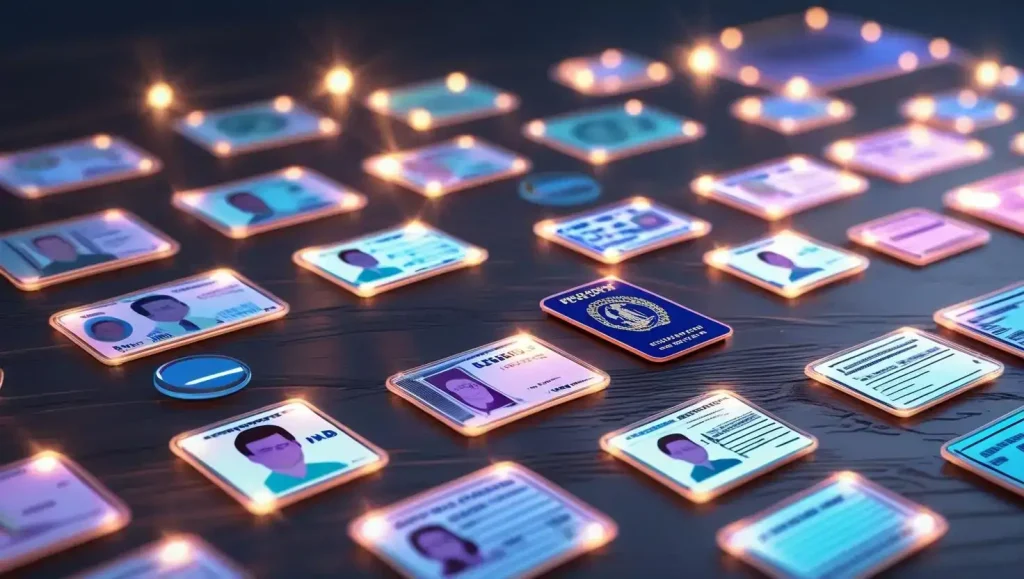The Rockerbox Data Breach: A Costly Mistake in the Tax Consulting Sector

Hoplon InfoSec
11 Jul, 2025
The incident involved Rockerbox, a tax credit consultancy based in Texas. consultancy based in Texas. The incident exposed over 245,000 records totaling nearly 287 GB of sensitive data. According to Cyber Security News it is 245949. This wasn’t the result of a sophisticated cyberattack. The incident resulted from a silent yet catastrophic oversight involving an unprotected and publicly accessible server.
Unlike high-profile ransomware hits that make headlines for days, this breach represents a quieter but equally dangerous form of data exposure. With no malware involved and no active exploitation (at least not initially reported), the Rockerbox incident underscores how simple missteps in cloud configuration can cause as much damage as deliberate hacking efforts.
This brouhaha not only exposed critical personal data about clients and individuals but also revealed systemic issues in how financial In an industry that upholds confidentiality, the Rockerbox breach serves as a stark reminder. iality, the Rockerbox breach serves as a stark reminder.
Who Is Rockerbox?
Rockerbox is a consultancy that specializes in helping businesses claim government tax credits, especially under programs like the Work Opportunity Tax Credit (WOTC) and Employee Retention Tax Credit (ERTC). These programs incentivize hiring practices and employment retention during economic uncertainty. Rockerbox’s role is to manage documentation, verify eligibility, and file claims on behalf of businesses and workers.
To carry out this role, the company collects and stores highly sensitive information, including employment records, income details, identification documents, and personal tax forms. Clients trust Rockerbox to protect this data with the same rigor expected of The moment Rockerbox’s internal storage became publicly accessible, it broke that trust.
storage became publicly accessible, it broke that trust.
What Happened: Unsecured Server Exposes Nearly 287 GB of Data

Cybersecurity researcher Jeremiah Fowler discovered an unprotected server containing 245,949 records linked to Rockerbox’s operations. The server lacked basic protections, such as a password, encryption, and an authentication layer, which made its contents accessible to anyone who discovered the URL.
Contained within the server were thousands of documents, including numbers.
- Driver’s license scans
- Social Security numbers
- Military discharge forms (DD214)
- Tax credit application forms
- Payroll data and employment verification documents
- Signed PDFs and completed WOTC/ERTC paperwork
- The file names included full names, dates of birth, and additional information.ditional information.
In total, the server hosted 286.9 gigabytes of data. The documents were arranged in folders by client or submission type, with some forms revealing not only employee data but also employer-side information.
What made The company was unaware of the data exposure until the researcher brought it to their attention. The data was exposed until the researcher reported it.
Why This Data Is So Sensitive

Unlike email addresses or phone numbers, which can be easily changed, documents like Social Security numbers and scanned IDs are accessed by malicious actors. This information can be used to steal identities, open fraudulent accounts, commit tax fraud, or even fabricate employment histories.
In some cases, the data included not just the usual identifiers but supporting details that complete a profile, such as the name of the employer, the dates of employment, and salary history. These factors create a high-value data set for cybercriminals engaged in social engineering or synthetic identity fraud.
The inclusion of military discharge documents adds another layer of risk. DD214 forms contain information about veterans’ service history and benefits eligibility. The exposure of such documents can lead to targeted scams aimed at former military personnel, a group already disproportionately targeted in fraud campaigns.
Timeline of Discovery and Response
The timeline surrounding the breach raises concerns about response efficiency and transparency. The breach was discovered in early July 2025 and disclosed shortly thereafter. The researcher who found the data reported it promptly, and Rockerbox took the server offline shortly after notification.
However, as of this writing, Rockerbox has not issued a press release, reached out to affected individuals, or indicated any regulatory reporting, and there is no indication of such reporting. This lack of transparency creates confusion, frustration, and mistrust among those whose data may have been compromised.
In the modern data landscape, incident response is not just about closing the breach; it’s about informing the people who are at risk and offering remediation to the breach attacker in order to prevent a hack, but that doesn’t matter. said.
The Breach Was Not a Hack, But That Doesn’t Matter

There’s a common misconception that a breach must involve an attacker to be serious. Rockerbox’s situation proves otherwise. No ransomware gang infiltrated their systems. No malware exfiltrated data under cover of darkness. The exposure was passive; a door was left wide open.
Yet the impact is no less severe.
The damage stems from the public availability of personal, legal, and financial documents on a cloud server for an unknown duration. Bots, fraud rings, or competitors could have indexed, downloaded, mirrored, or scraped that data. The absence of encryption or access logs makes it nearly impossible to know for sure.
In cybersecurity, intent doesn’t always matter; impact does. And in this case, the impact is vast.
Public and Legal Reaction
Although Rockerbox has not made any statements, the cybersecurity and legal communities are responding. Industry experts have called out the firm’s failure to follow basic data security practices, especially given the sensitivity of the information involved. Several cybersecurity blogs have published detailed analyses of the exposure, raising public awareness.
In parallel, law firms are already investigating the possibility of class-action lawsuits. If Rockerbox operated in states with strong privacy regulations, such as California or Illinois, it may be subject to legal obligations to notify affected individuals and offer identity protection services. Regulatory agencies could also become involved, especially if the data includes residents from multiple states or countries.
Given the protections surrounding military records, the exposure of veterans’ documents may prompt scrutiny from federal authorities.
How This Compares to Other 2025 Data Breaches
So far in 2025, the cybersecurity world has seen a mix of ransomware incidents, credential dumps, and misconfiguration leaks. While each category presents unique risks, misconfiguration continues to dominate due to its ease of exploitation and preventability.
| Breach | Records Exposed | Type of Data | Root Cause |
| Rockerbox (Texas, July 2025) | ~245,000 | IDs, SSNs, DD214, tax forms | Unsecured server (misconfig) |
| Talenthook (U.S., July 2025) | ~26 million | Resumes, contact info, employment | Misconfigured Azure container |
| PET Imaging (Houston) | ~16,000 | Medical records, insurance data | Phishing, email compromise |
| Bitcoin Depot (Atlanta) | ~26,000 | Driver’s licenses, financial info | Application vulnerability |
The Rockerbox breach stands out for the depth and diversity of data exposed. While Talenthook leaked a wide swath of resumes, Rockerbox’s leak included documents that tie directly to financial eligibility, identity, and legal entitlements.
Risks to Individuals
The risk to affected individuals is both immediate and long-term. Short-term uses of the data could include tax return fraud, phishing attacks, or impersonation. Long-term risks include credit fraud, employment fraud, and even attempts to claim government benefits in someone else’s name.
Because WOTC and ERTC documentation often includes employer endorsements, exposed employees could face reputational risks if their data is misused. Some may not even realize their information was shared with Rockerbox in the first place, particularly if a previous employer outsourced the tax credit process.
The risk is especially high for military veterans. Exposure of DD214 documents could lead to fake VA claims or targeted scams disguised as benefits enrollment.
A Bigger Problem in Financial Services
Rockerbox’s breach reflects a larger issue in the financial and tax consulting industry. Often operating in regulatory gray areas, these firms collect sensitive data without adhering to the same standards as banks or insurance companies.
While they play a critical role in employment and business financing, they may not always be staffed with the cybersecurity expertise required to manage cloud infrastructure safely. In a sector where clients assume bank-level protections, misconfigured cloud servers reveal a dangerous mismatch between expectation and reality.
Firms that manage tax credits, payroll, and employment data must recognize that they are data stewards. The Rockerbox incident proves that being small or regional does not exempt a company from global security responsibilities.
What Should Happen After The tax consultancy sector rockerbox data breach

At a minimum, Rockerbox should publicly acknowledge the breach, notify affected individuals, and offer identity protection services such as credit monitoring. Transparency and accountability are crucial in rebuilding trust with clients and partners.
The firm should also conduct a third-party security audit, implement stricter access controls, and ensure encryption for all future data storage systems. A review of employee training and DevOps procedures is essential to prevent another misconfiguration.
Regulators, in turn, should begin investigations into compliance with data protection laws. If evidence suggests negligence or repeated offenses, enforcement actions should follow.
Finally, industry peers must take this as a cue to examine their own systems. Every unencrypted folder, every public S3 bucket, and every weak admin password are potential explosives waiting to make headlines.
What Individuals Can Do
If you suspect your data was handled by Rockerbox, either directly or via an employer, you should take immediate steps to protect yourself:
- Freeze your credit reports with major bureaus
- Watch for fraudulent tax filings or employment claims
- Monitor VA and government benefit accounts if you are a veteran.
- Use an identity theft protection service for early detection
- Contact former employers to understand what data may have been submitted
Even if no fraud occurs right away, the exposed documents could be used years later. Staying vigilant is the best defense.
Last Words- A Breach That Never Should Have Happened
The Rockerbox data breach is yet another example of how devastating a simple security lapse can be. There was no ransomware payload, no advanced persistent threat, and no zero-day exploit. Just a misconfigured server, hosting nearly 287 gigabytes of sensitive documents, wide open to the public. That’s all it took.
This breach may not have made as much noise as others, but its implications are no less serious. When you collect people’s identities, finances, employment histories, and military service records, you bear the responsibility to protect them with everything you’ve got. Rockerbox didn’t.
And unless firms like it begin treating cybersecurity as a core business function, not an afterthought, this won’t be the last headline we read about a preventable breach shaking the very trust on which their business is built.
Did you find this article helpful? Or want to know more about our Cybersecurity Products Services?
Explore our main services >>
Mobile Security
Endpoint Security
Deep and Dark Web Monitoring
ISO Certification and AI-Management System
Web Application Security Testing
Penetration Testing
For more services go to our homepage
Follow us on X (Twitter), LinkedIn for more Cyber Security news and updates. Stay connected on YouTube, Facebook and Instagram as well. At Hoplon Infosec, we’re committed to securing your digital world.
Share this :